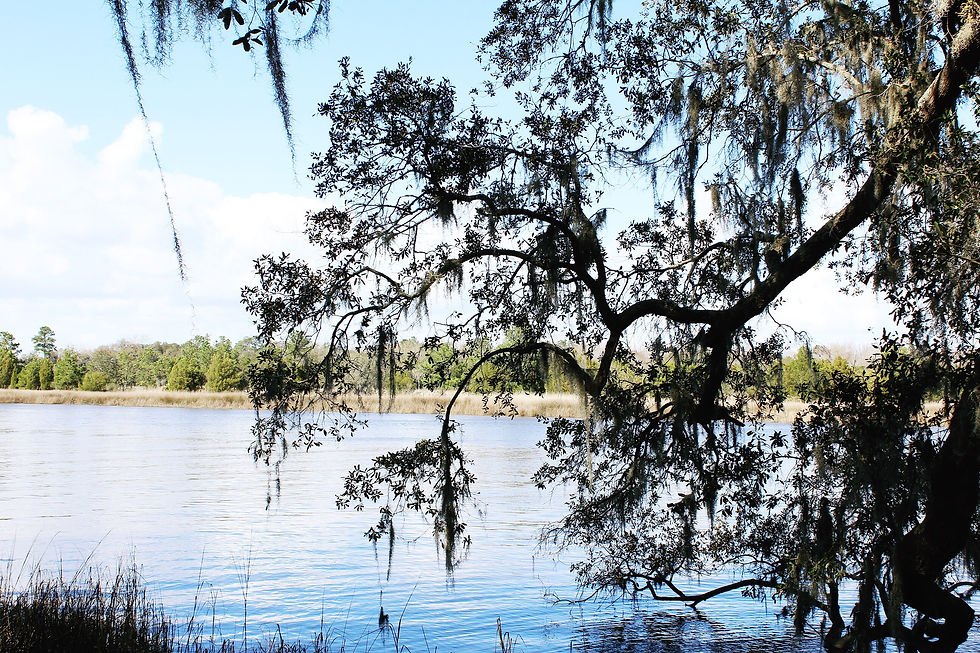DRAYTON HALL'S LAVISH CULTURE
- REBECCA
- Mar 4, 2018
- 3 min read

The historical elegance of Drayton Hall...
Last weekend, I had my sights set on planning an excursion to Drayton Hall since our mini "getaway" to Boone Hall pervaded us with bliss by virtue of the angelic flowers, weeping oak trees, and vast pasture. So this past weekend, we ventured out to Drayton Hall to discover the allure of an eighteenth century plantation.
Astonishingly, Drayton Hall is the only historical landmark in the country to have survived both the Civil and Revolutionary Wars, but it isn't apparent as you amble through the manor. Although the furniture has been defaced due to the absence of internal climate control, the astonishing architecture and intricate interior design show little sign of disfiguration. From the hand carved woodwork above fireplaces, to pale ceramic stars plastered on the ceiling, to carefully etched designs crafted by those who stood with their arms over their heads for hours carefully sculpting meticulous designs into the ceiling, the mansion is genuinely a work of art. The amount of detail and zeal that went into building a structurally sound and artistic house is commendable.


My love of all things design, history, and detail finds peace in the Palladian house. From the carefully thought out design patterns, to the simplicity of stabilization (Drayton Hall has been preserved rather than restored), the mansion seems so sacred, yet inviting, concurrently. Entertaining rooms for guests were designed with elegance, showcasing carefully sculpted designs, such as a depiction of four ladies dancing and numerous floral patters sculpted into the ceiling and above the mantle. As exquisite as the guests rooms were, the exclusive family rooms are thought to be even more grand, although much of the design work in those rooms has been lost or destroyed since its initial building in the 1700's.


Another true gem of Drayton Hall is the aesthetic landscape, designed by John Drayton in the 18th century. The verdant meadow surrounds the mansion with intricacy. As a witty arborist, John planted abundant oak trees and excavated a space between the lush grass and the forefront of the Ashley River to keep his livestock on the pasture closest to the mansion. His son, Charles, was an avid botanist who embellished the grounds with exotic flowers and a modest, yet endearing garden house overlooking the Ashley River. As you can imagine, between the efforts of John and Charles, the landscape is vivid, inviting, and a pleasure to walk around. Today, the picturesque landscape is still surrounded by ever present undulating greenery.



When visiting plantations, I can never trivialize the diligent work slaves put into the existence of the territory. At Drayton Hall, 300,000 bricks were crafted on site, by hand through the work of slaves. All crops and carving were carefully produced/designed on site. The appreciation and amazement I have gained from this visit is beyond words. Salve work is so commendable, and were it not for their perseverance, we wouldn't have the opportunity of visiting such elegant plantations today.
Insider tip: While I absolutely loved visiting Drayton Hall as is without many technological advances, the organization is planning to open a freshly updated visitor's center, a courtyard garden featuring paintings of the Drayton family's botanical interest, an exhibit gallery displaying furniture and art from the Drayton's home, and an education center. This is all happening around the end of April!

Although the plantation grounds are smaller than Boone Hall, Drayton Hall holds genuine historical presence, and for me, there seems to always be a longing to extricate the genuine things and places around me. The golden hour pictures of the mansion, the light dancing on the water, and the welcoming sensation is truly special. There's something so grand in simplicity.



























Comments